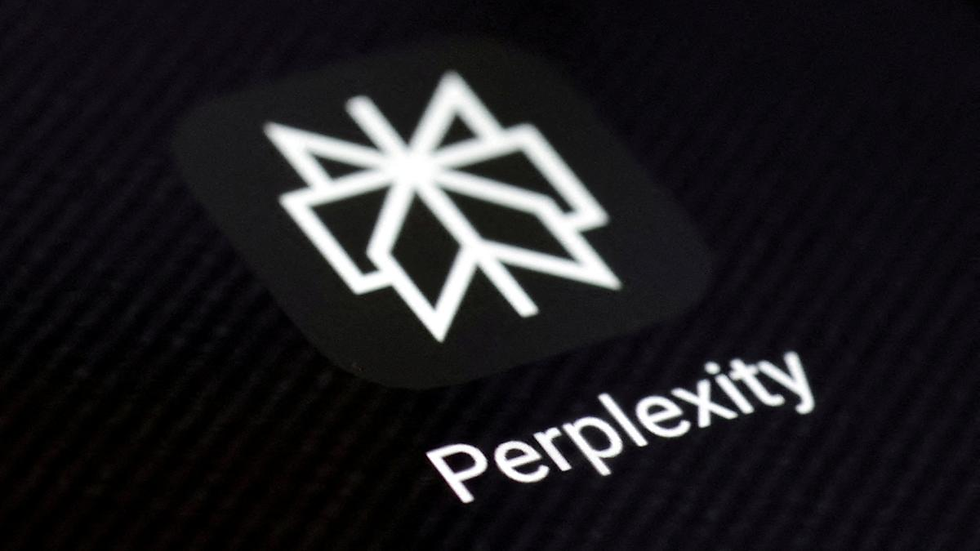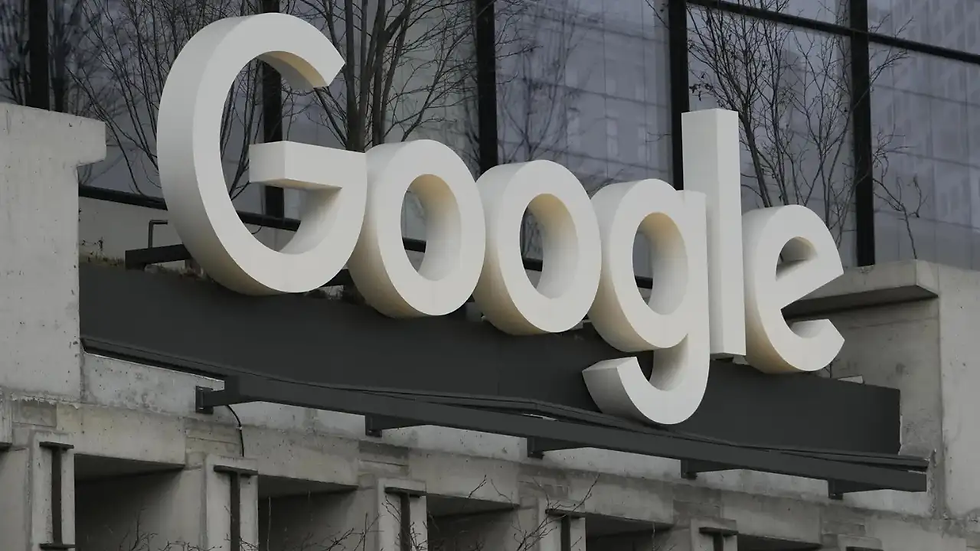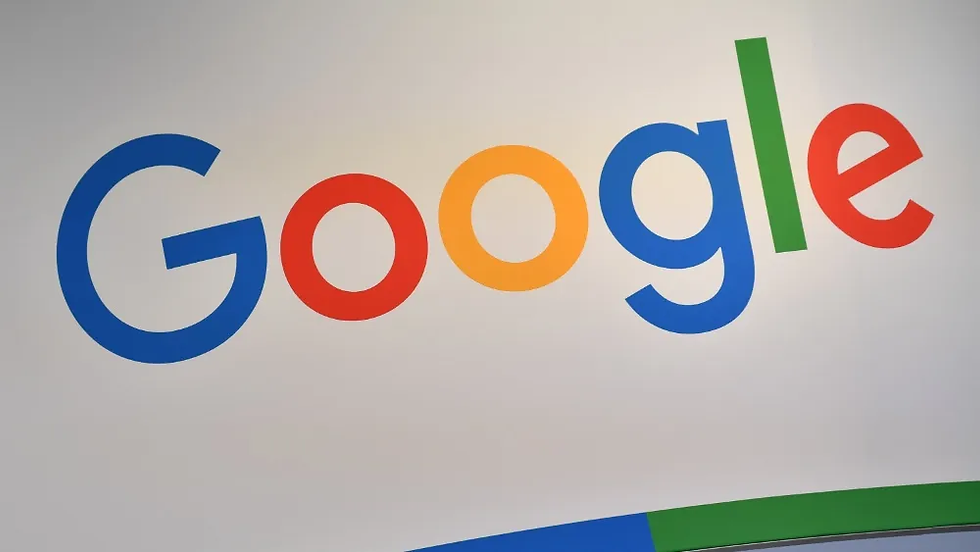Why the Latest Chrome Acquisition Bid Defies Every Prediction About Internet Monopoly Power
- Aisha Washington

- Aug 13
- 14 min read

Perplexity AI’s unsolicited $34.5 billion offer to buy Google’s Chrome browser has suddenly thrust the mechanics of online market power back into the spotlight. Reuters first reported the headline-making Perplexity offer of $34.5 billion for Chrome, a move that collides with a parallel push by U.S. enforcers to consider remedies including the divestiture of Chrome, as outlined by the Financial Times’ coverage of the DOJ’s proposal to divest Chrome. Chrome has been called the forgotten fulcrum of Google’s dominance because a browser’s default settings, routing, and platform controls feed search and advertising revenue in ways that are subtle but decisive, a point made lucidly in the ProMarket analysis. At the same time, the EU’s Digital Markets Act imposes obligations on “gatekeepers,” creating a transatlantic regulatory backdrop that magnifies the consequences of any ownership change. This article argues that Perplexity’s bid both exposes and upends conventional assumptions about remedies and market power: rather than a tidy fix, a sale of Chrome could deepen uncertainty, enable new concentration, and reshape the enforcement calculus in ways scholars and policymakers have not fully anticipated.
Background — Chrome, Google’s Market Power, and Antitrust Context

To understand why a single bid can reverberate through debates about internet monopoly power, it helps to unpack Chrome’s strategic place in Google's ecosystem and the legal environment shaping potential outcomes.
Chrome’s strategic role in Google’s ecosystem and advertising pipeline
Chrome is more than a piece of user software; it is a distribution layer that governs what users see first. By setting defaults, controlling address-bar behavior, and integrating with operating systems and app platforms, Chrome routes enormous volumes of user attention toward Google Search and related services. That routing creates ad inventory and measurement signals that feed Google’s ad auctions and publisher relationships. As the ProMarket piece on Chrome’s fulcrum role argues, the browser’s controls — from default search providers to APIs and privacy settings — act as levers in the ad ecosystem: change the levers, and you change downstream monetization and bargaining power. Academic work has stressed this distributional role too; a technical-economic perspective finds that Chrome’s architecture alters how users discover and interact with search and content, and hence how ad dollars flow into the system (see the analysis on the structural interplay between browser and market outcomes in the arXiv study on Chrome’s antitrust paradox).
Google’s market share and commercial practices that triggered antitrust scrutiny
Google’s dominance in search and related markets is well-documented. Regulators and scholars point to overwhelming share figures and large payments to secure default positions on devices and browsers as central competitive concerns. Reporting and Congressional findings have repeatedly shown Google’s search market share dwarfs competitors, which in turn makes default-setting deals — often paid agreements that name Google as the preselected search provider — crucial to maintaining market position (CNBC summarized this dominance). Post-litigation commentary has distilled several lessons about the role of default search payments in entrenching incumbency; investor and policy analyses such as Wing VC’s takeaways emphasize that distribution arrangements — not only product quality — have sustained Google’s reach.
Regulatory framework — DOJ, EU Digital Markets Act, and international pressure
Enforcement pressure on Google spans jurisdictions and instruments. In the U.S., the Department of Justice has floated remedies that include structural separation or the divestiture of Chrome, a dramatic proposal reported in the Financial Times. In Europe, the Digital Markets Act (DMA) targets gatekeepers with ex ante rules on interoperability, default settings, and data portability — a different toolset from U.S. ex post litigation. The contrast matters: the DMA can impose obligations quickly and across borders, while U.S. remedies typically proceed through lengthy litigation and consent decrees. This cross-border patchwork creates frictions: enforcement in one jurisdiction changes incentives and legal constraints elsewhere, complicating remedies and buyer profiles in any potential Chrome sale.
Insight: Chrome sits at the intersection of product design and market structure; solving one without the other is unlikely to restore competitive dynamics.
The Perplexity AI $34.5 Billion Chrome Acquisition Bid — Facts, Timeline, and Motivations

Perplexity’s approach to Chrome crystallizes the tensions between private ambition and public enforcement. The bid is a test case in how an emerging AI company attempts to leverage regulatory uncertainty.
What Perplexity offered and the public timeline
In a bold, unsolicited move reported by Reuters, Perplexity — an AI startup known for conversational search and generative models — submitted a $34.5 billion bid to acquire Google’s Chrome browser. Coverage in the Wall Street Journal placed the offer in its corporate context: it was unsolicited, publicized rapidly, and timed amid heightened regulatory scrutiny of Google’s distribution practices. The bid attracted attention because it’s unusually large for a startup-led approach and because it targets a regulatory nexus rather than a traditional product gap.
Perplexity’s strategic motivations — AI startup leverage vs regulatory windows
Why would an AI company make such an audacious overture? Two overlapping motives appear plausible. First, Perplexity could be attempting to secure a direct distribution channel for its AI-driven answers, using Chrome to prioritize its models in address-bar interactions, new-tab experiences, or default assistant placements — effectively turning the browser into an AI delivery vehicle. Second, the candid timing suggests Perplexity sees the DOJ’s talk of a Chrome divestiture as a regulatory window: when remedies are ambiguous, challengers can position themselves as compliant buyers who will implement public-interest commitments faster than incumbents. The Reuters reporting framed the move as opportunistic yet strategic, leveraging the moment when regulators are debating structural options. The FT’s reporting on the DOJ’s divestiture proposal provides the enforcement backdrop that makes such opportunism conceivable.
Market reaction and media framing — immediate commentary
Initial market reaction was mixed. Some commentators treated the offer as overreach and financially implausible for a startup; others flagged it as smart positioning. The Wall Street Journal’s reporting highlighted skepticism about Perplexity’s ability to execute at scale, while Reuters’ coverage emphasized the novelty of an AI-first firm seeking browser ownership. Analysts focused less on valuation and more on strategic signal: the bid turns theoretical remedy debates into an immediate question of marketplace consequences. The moment reveals how bidders can weaponize regulatory ambiguity to reshape markets, or at least to claim the mantle of a remedial solution.
Insight: A buyer’s identity matters as much as the remedy; a small-but-aggressive buyer can remake the competitive landscape in unexpected ways.
Why the Chrome Acquisition Bid Defies Predictions About Internet Monopoly Power (Core analysis)

Perplexity’s bid does not simply add a new player to the field; it fractures assumptions about how antitrust remedies, market entry, and behavior change interact. Three analytical strands explain why this is not business as usual.
The "antitrust paradox" — why divestiture of Chrome could increase uncertainty rather than restore competition
At face value, breaking ownership links (i.e., divestiture) seems like a classic remedy for structural market power. But academic analysis — including the arXiv study on Chrome’s antitrust paradox — shows that divestiture can produce ambiguous or even perverse effects when the asset in question functions as an infrastructural distribution point rather than an isolated product. Owning a browser gives control not only over defaults but over interfaces, APIs, measurement signals, and privacy settings: these are behavioral and technical levers that shape user attention and ad-market outcomes. A sale to an actor that prioritizes its own services could replicate vertical affiliation harms under a new label. Conversely, splitting an asset without ensuring ongoing interoperability, data access, and enforceable commitments may simply redistribute gatekeeper power. The ProMarket analysis frames Chrome as the “forgotten fulcrum,” arguing that breaking up the company in traditional ways — divesting a product without redesigning the underlying incentives — risks leaving core market distortions intact.
Key takeaway:Structural remedies that ignore the ecosystem’s behavioral architecture are unlikely to fully restore competition.
How Perplexity’s move weaponizes regulatory ambiguity
Perplexity’s bid exemplifies how a buyer can exploit a regulatory window. When regulators signal potential remedies but do not specify enforceable buyer conditions, market actors can present themselves as ready-made solutions. That leverages regulatory ambiguity in two ways: it creates negotiating leverage (the incumbent can argue only they can ensure data flows or standards) and it incentivizes buyers who promise rapid compliant implementation. Reuters’ reporting on the bid emphasizes the opportunistic timing, while the FT’s coverage of DOJ proposals highlights how open-ended remedies invite creative responses. In short, uncertain remedies create openings for ambitious buyers to capture assets and shape future regulatory implementation.
Insight: Ambiguous remedies can turn enforcement into a strategic asset; buyers can position themselves as the “fix,” for better or worse.
Behavioral economics and defaults — why users may not switch even after divestiture
A core lesson from the Google antitrust case is that user behavior is sticky. Defaults — pre-selected options or settings — exert outsized influence because of inertia, cognitive load, and habit. KGI Georgetown emphasized the role of behavioral economics defaults in the ruling, noting that small frictions and attention asymmetries sustain incumbent advantage. If Chrome is divested and a new owner retains the same interface logic, or if the ecosystem still privileges a single search provider through ecosystem incentives and integrations, user switching may remain minimal. Changing ownership without changing the default architecture — onboarding flows, preselected providers, address-bar behavior — will likely produce limited competition gains. The arXiv paper reinforces this: distributional power is structural and psychological, not simply a product of ownership.
Key takeaway:Altering ownership is not equivalent to altering user behavior; remedies must address defaults and the interfaces that shape choices.
Regulatory and Enforcement Challenges — Why Remedies Might Fail or Produce Unintended Consequences

Remedies are not only legal instruments; they are operational and political projects whose success depends on enforcement design, international cooperation, and clear technical constraints.
DOJ’s proposed remedies vs. enforceability hurdles
The DOJ’s conversations about divestiture are a bold step but one fraught with practical hurdles. The Financial Times’ reporting shows the DOJ considers separating Chrome as a structural remedy to break distribution linkages. Yet enforcing such a remedy raises questions: how do you define the asset that must be sold (source code, distribution rights, partnerships, integrations)? How do you ensure post-sale conduct doesn't recreate the same problems? CEPA warned that while verdicts may be clear, outcomes are often unclear because of these implementation challenges. An effective divestiture would require granular, enforceable commitments about defaults, data portability, and long-term monitoring — demands that stretch typical antitrust consent decree capabilities.
Insight: A divestiture without long-term, enforceable oversight risks being cosmetic.
The EU Digital Markets Act and how it differs from US remedies
The Digital Markets Act takes a preventative, rule-based approach: designate gatekeepers and impose ex ante obligations on default settings, data sharing, and interoperability. This contrasts with U.S. litigation-led remedies that react to anticompetitive conduct and often aim for structural change. The DMA can act more quickly and impose standards on buyer conduct, potentially constraining what a post-divestiture owner can do. However, the DMA’s reach is geographic and legal: it can regulate behavior within Europe and influence corporate practices globally, but it cannot directly dictate U.S. consumer defaults. That leads to asymmetric pressures: a buyer like Perplexity might accept DMA constraints to operate in the EU while pursuing different strategies in the U.S., creating regulatory fragmentation and compliance complexity.
Key takeaway:Cross-jurisdictional divergence (DMA vs U.S. remedies) raises the bar for robust, global enforcement and increases the complexity of any sale.
Practical risks: consolidation, regulatory capture, and unintended concentration
An ironic risk is that divestiture could produce a new concentrated owner who wields Chrome’s distributional levers in ways just as problematic as Google’s past conduct — potentially forming a new gatekeeping center around AI-driven search. If a motivated buyer like Perplexity (or another large incumbent) acquires Chrome, the market may shift from one concentrated player to another. CEPA and other analysts note that enforcement failures often produce regulatory capture or regulatory arbitrage: firms adapt to rules while preserving market power. Reuters’ coverage of Perplexity’s bid underscores this dynamic: a buyer’s intent and subsequent behavior matter as much as the fact of separation.
Insight: Without strict buyer vetting and post-sale safeguards, remedies can catalyze new market concentrations rather than reduce them.
Market Impacts, Use Cases, and Practical Scenarios if Chrome Changes Hands

If Chrome moves to new ownership, the effects would be immediate for users, publishers, advertisers, and AI platforms. Below are plausible scenarios and tactical implications.
For users — UX, privacy, and default search implications
Users could face several changes depending on the buyer’s priorities. A buyer might:
Make its own search or AI assistant the default, surfacing generative answers directly in the address bar.
Strengthen privacy features (e.g., lock down cross-site tracking) to differentiate the product and appeal to privacy-conscious users.
Maintain compatibility with existing extensions but adjust APIs to favor integrated services.
Each scenario affects user choice differently. If Perplexity prioritized its model in the browser, users would see AI answers by default — a change that would alter information flow and potentially ad exposure. Conversely, privacy-first changes could reduce ad targeting and ad revenue, rebalancing publisher economics. The immediate user experience impact was central to Reuters’ reporting, which emphasized the strategic leverage that browser defaults provide. Behavioral economics research cautions that even changes intended to increase choice may be ineffective without careful design to overcome default inertia.
Actionable takeaway for users: Watch default and privacy settings closely and use browser controls to lock preferred providers if possible.
For publishers and advertisers — ad inventory, measurement, and platform bargaining power
Chrome’s existing integrations feed into Google’s ad measurement and inventory systems; a new owner could restructure those relationships. Possible impacts include:
Changes to how address-bar searches generate ad impressions and which ad networks receive priority.
Different data-access and measurement regimes that alter attribution and reporting accuracy.
Shifts in publisher bargaining power: if the browser reduces tracking or redirects queries to non-Google sources, publishers may see changes to referral traffic and ad yields.
Academic work on Chrome’s structural role suggests such changes could reverberate through adtech, affecting auction dynamics and measurement consistency (arXiv: Chrome antitrust paradox; ProMarket on Chrome’s role). Publishers should prepare for volatility in referral patterns and measurement; advertisers should demand transparency about new auction mechanics and data flows.
Actionable takeaway for publishers and advertisers: Negotiate contractual protections around data access and measurement guarantees; plan for short-term volatility in traffic and attribution.
For AI platforms and startups — distribution channel or regulatory Trojan horse?
A buyer like Perplexity owning Chrome could be a huge boon to an AI startup: built-in distribution solves discoverability and query routing problems. But it could also create a regulatory Trojan horse where the browser becomes the vector for entrenching a new AI-first gatekeeper. The WSJ’s market commentary questioned whether a startup can operationalize large-scale browser ownership in a way that benefits consumers and the market (WSJ commentary). If a buyer prioritizes its own models, it could create network effects that tilt developers, advertisers, and publishers toward its ecosystem, limiting downstream competition. Conversely, a buyer that open-sources interfaces and enforces data portability could broaden distribution opportunities across AI players.
Actionable takeaway for startups: Advocate for enforceable interoperability and data-portability commitments in any approved sale to preserve a competitive distribution layer.
Insight: Browser ownership is a high-leverage strategic asset for AI distribution; regulators must treat buyer commitments as central to any approval.
Case Studies & Scholarly Insights — What Research and Past Remedies Tell Us

Historical and scholarly evidence provides guardrails for thinking about remedies and their likely success.
Academic findings on Chrome and distributional power
Research underscores that browsers are distribution platforms whose technical design shapes market outcomes. The arXiv analysis articulates how Chrome’s code, settings, and APIs modify discovery and measurement, while ProMarket’s investigation frames the browser as central to ad and search dynamics. Both lines of research stress that ownership is not simply an economic fact; it's a vector for setting defaults, prioritizing services, and shaping the informational environment.
Actionable takeaway for policymakers: Remedies should target the distributional levers (defaults, APIs, measurement signals), not only ownership structures.
Historical analogues and enforcement lessons (e.g., break-ups, forced divestitures in tech)
Past antitrust remedies offer mixed lessons. Some divestitures in telecom and other sectors yielded meaningful competition; others produced re-consolidation or failed to change user behavior meaningfully. CEPA’s analysis captures this ambiguity: judges and regulators may reach clear legal conclusions, but implementation leads to uncertain outcomes when technical architectures and market incentives are not redesigned. The FT’s account of DOJ thinking also shows that even when structural remedies are considered, operationalizing them poses novel challenges.
Actionable takeaway for enforcement agencies: Bake long-term monitoring, technical standards, and international coordination into remedy design to avoid re-concentration.
Behavioral economics evidence on defaults and switching
Behavioral economics research — invoked by analyses such as the KGI Georgetown note — shows users often stick with default options due to inertia, perceived friction, or low salience of alternatives. That implies remedies must tackle the choice architecture: changing buttons, onboarding flows, and prompts can materially affect whether users actually switch. This insight elevates interface design from a UX problem to a core antitrust lever.
Actionable takeaway for designers and regulators: Implement default-flipping mechanisms and clear, repeated prompts that encourage active user choice rather than passive retention.
Robust FAQ — Likely Reader Questions Answered
Q: Could Perplexity actually buy Chrome? What hurdles exist?
Short answer: Possible but difficult. A sale would face corporate governance constraints within Alphabet, regulatory scrutiny across jurisdictions, and practical valuation and integration hurdles. Regulators would evaluate buyer fitness, competitive effects, and commitments on defaults and data. The Reuters report framed the bid as bold and unexpected, underscoring these obstacles. The DOJ’s divestiture talk means any sale would be deeply regulated.
Q: Would divesting Chrome solve Google’s monopoly problems?
Short answer: Not necessarily. Academic work shows that ownership changes alone may not change the distributional levers that create dominance. The arXiv study highlights an antitrust paradox where divestiture without interface and data remedies leaves core distortions intact (arXiv: Chrome antitrust paradox). CEPA similarly warns that clear legal victories can yield unclear market outcomes.
Q: How would this affect advertisers and publishers?
Expect shifts in ad inventory, measurement, and bargaining dynamics. A new owner can change how address-bar queries translate to ad impressions and which ad networks receive priority. Publishers should prepare for traffic volatility and renegotiate measurement and data-access terms; advertisers should demand transparency on auction mechanics. ProMarket’s analysis explains how Chrome’s role shapes ad and publishing economics (ProMarket: Chrome’s role).
Q: What should regulators watch for if a sale is attempted?
Regulators should vet buyer intent, require enforceable default-setting commitments, ensure data portability and auditability, and design long-term monitoring. The FT’s reporting on DOJ thinking suggests the agency is aware that enforcement must be precise. The Digital Markets Act also offers a model for ex ante obligations that could complement U.S. remedies.
Q: Would the EU’s Digital Markets Act block harmful outcomes?
The DMA can limit some harmful behaviors in its jurisdiction by mandating interoperability, default choice, and data-sharing. But it cannot alone prevent divergent behavior outside the EU. Coordination between DMA enforcement and U.S. remedies would strengthen outcomes; without it, companies may practice regulatory arbitrage.
Q: What can consumers and developers do right now?
Consumers can lock in privacy and default settings in their browsers and explore alternatives. Developers and startups should lobby for interoperable APIs and data-portability safeguards so that distribution does not become a winner-take-all bottleneck.
Actionable Conclusions and Forward-Looking Analysis — What Comes Next for Chrome, Google, and Antitrust
Key takeaways — why the Perplexity bid matters for monopoly debates
The bid exposes remedy ambiguity. Perplexity’s move shows that uncertain enforcement windows invite creative bids that may reshape markets rather than simply fix them.
Chrome is a distributional fulcrum. Owning a browser affects defaults, APIs, and ad signals in ways that are more consequential than a simple product sale — a point made in depth by ProMarket.
Ownership changes without behavioral fixes are incomplete. The academic literature warns that divestiture alone may leave default-driven market power intact.
Policy recommendations and safeguards for regulators and lawmakers
Require enforceable default-setting commitments and explicit, monitored changes to onboarding and address-bar behavior in any sale approval. See the DOJ’s focus on structural remedies as context for this approach.
Mandate data portability and auditability: all buyers should provide standardized, machine-readable data access to advertisers, publishers, and measurement firms. The DMA’s portability focus offers a template.
Implement long-term independent monitoring with technical experts empowered to audit compliance and interface changes.
Foster cross-border coordination (U.S.–EU) so that buyers cannot arbitrage regulatory regimes to recreate gatekeeper power.
Forecasts: 3 plausible market outcomes in the next 12–24 months
Perplexity buys Chrome and attempts rapid AI-first integration. Regulatory authorities impose conditions; markets see short-term volatility but potential consolidation around Perplexity’s ecosystem.
A divestiture proceeds to a larger incumbent or platform, producing a new gatekeeper with similar market effects; enforcement struggles to prevent re-concentration (CEPA warns of this enforcement uncertainty).
Regulators combine structural remedies with DMA-style ex ante rules, producing incremental but durable changes to defaults and interoperability that slowly open space for alternative search and AI providers.
Bold move notwithstanding, the outcome will hinge on the legal conditions attached to any sale and the technical specificity of remedies.
Conclusion: Trends & Opportunities
The Perplexity AI bid for Chrome is important not because of its headline value alone, but because it reveals how fragile and consequential remedy design can be. The episode surfaces three intersecting trends: (1) the convergence of browsers and AI as delivery platforms, (2) the rising importance of default settings as antitrust battlegrounds, and (3) the increasing need for cross-jurisdictional enforcement instruments that anticipate technical and behavioral realities.
Opportunities:
Regulators can use this moment to craft remedies that are granular, technical, and enforceable — targeting defaults, APIs, and data flows rather than relying solely on asset transfers.
Startups and developers should push for binding interoperability and data-portability standards to preserve distribution options.
Consumers can press for clearer, enforceable default-choice mechanisms that reduce inertia and increase genuine choice.
Final thought: The Perplexity bid upends simplistic narratives that breaking up a company equals restoring competition. Real change will require precise, technical remedies and global coordination — or else a different gatekeeper will simply take Google’s place.


